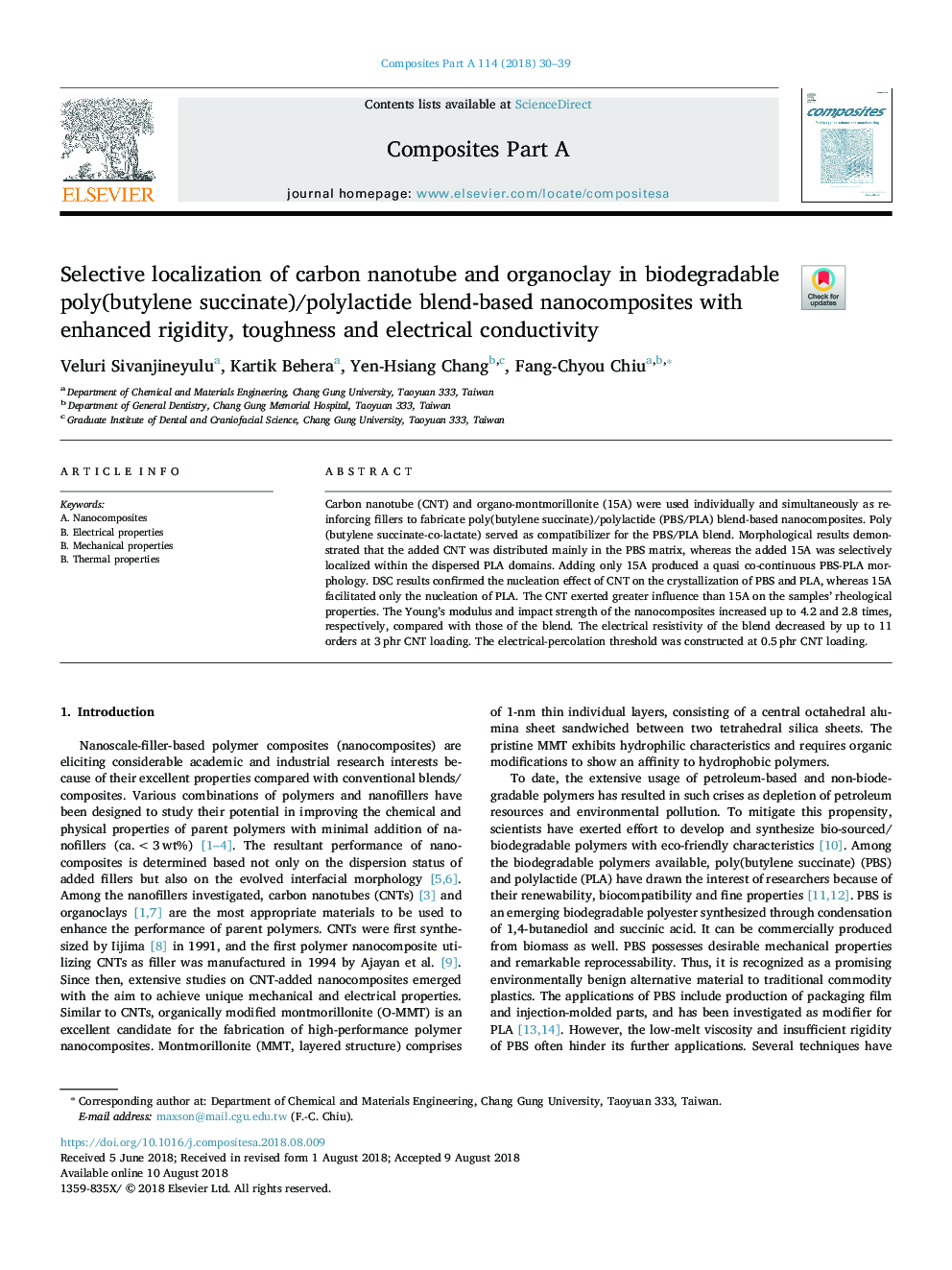| Article ID | Journal | Published Year | Pages | File Type |
|---|---|---|---|---|
| 8943115 | Composites Part A: Applied Science and Manufacturing | 2018 | 10 Pages |
Abstract
Carbon nanotube (CNT) and organo-montmorillonite (15A) were used individually and simultaneously as reinforcing fillers to fabricate poly(butylene succinate)/polylactide (PBS/PLA) blend-based nanocomposites. Poly(butylene succinate-co-lactate) served as compatibilizer for the PBS/PLA blend. Morphological results demonstrated that the added CNT was distributed mainly in the PBS matrix, whereas the added 15A was selectively localized within the dispersed PLA domains. Adding only 15A produced a quasi co-continuous PBS-PLA morphology. DSC results confirmed the nucleation effect of CNT on the crystallization of PBS and PLA, whereas 15A facilitated only the nucleation of PLA. The CNT exerted greater influence than 15A on the samples' rheological properties. The Young's modulus and impact strength of the nanocomposites increased up to 4.2 and 2.8 times, respectively, compared with those of the blend. The electrical resistivity of the blend decreased by up to 11 orders at 3â¯phr CNT loading. The electrical-percolation threshold was constructed at 0.5â¯phr CNT loading.
Related Topics
Physical Sciences and Engineering
Materials Science
Ceramics and Composites
Authors
Veluri Sivanjineyulu, Kartik Behera, Yen-Hsiang Chang, Fang-Chyou Chiu,
